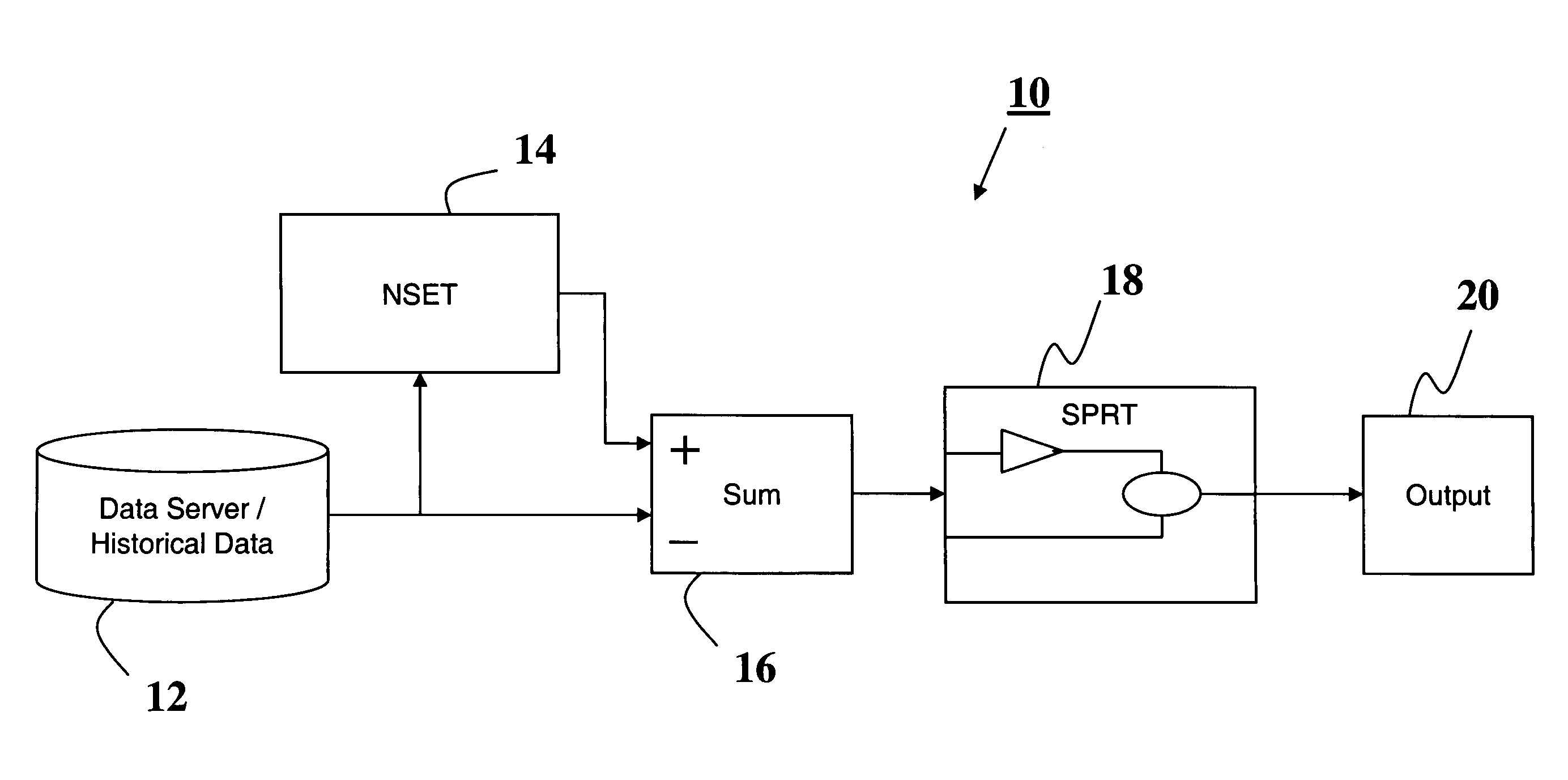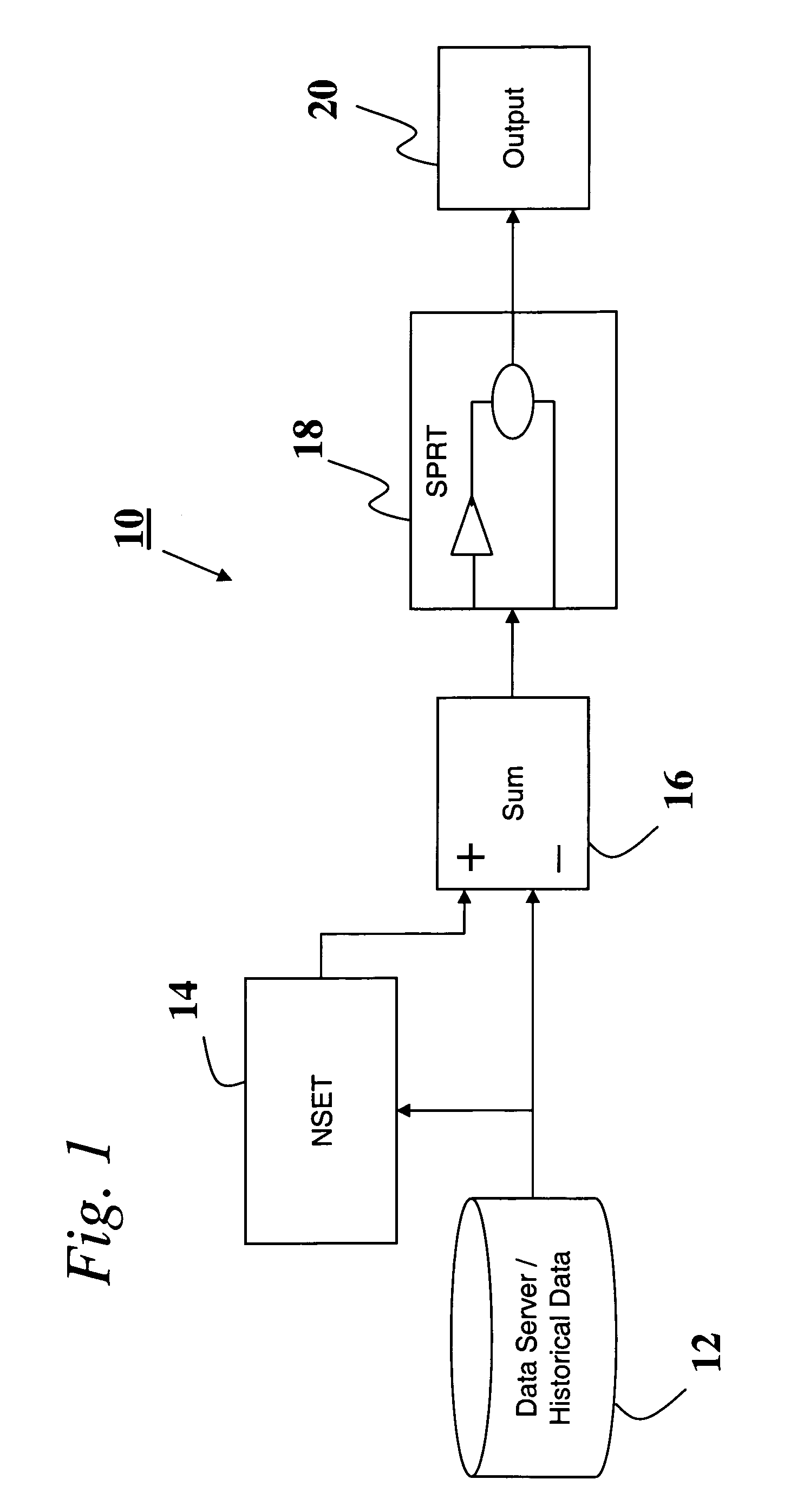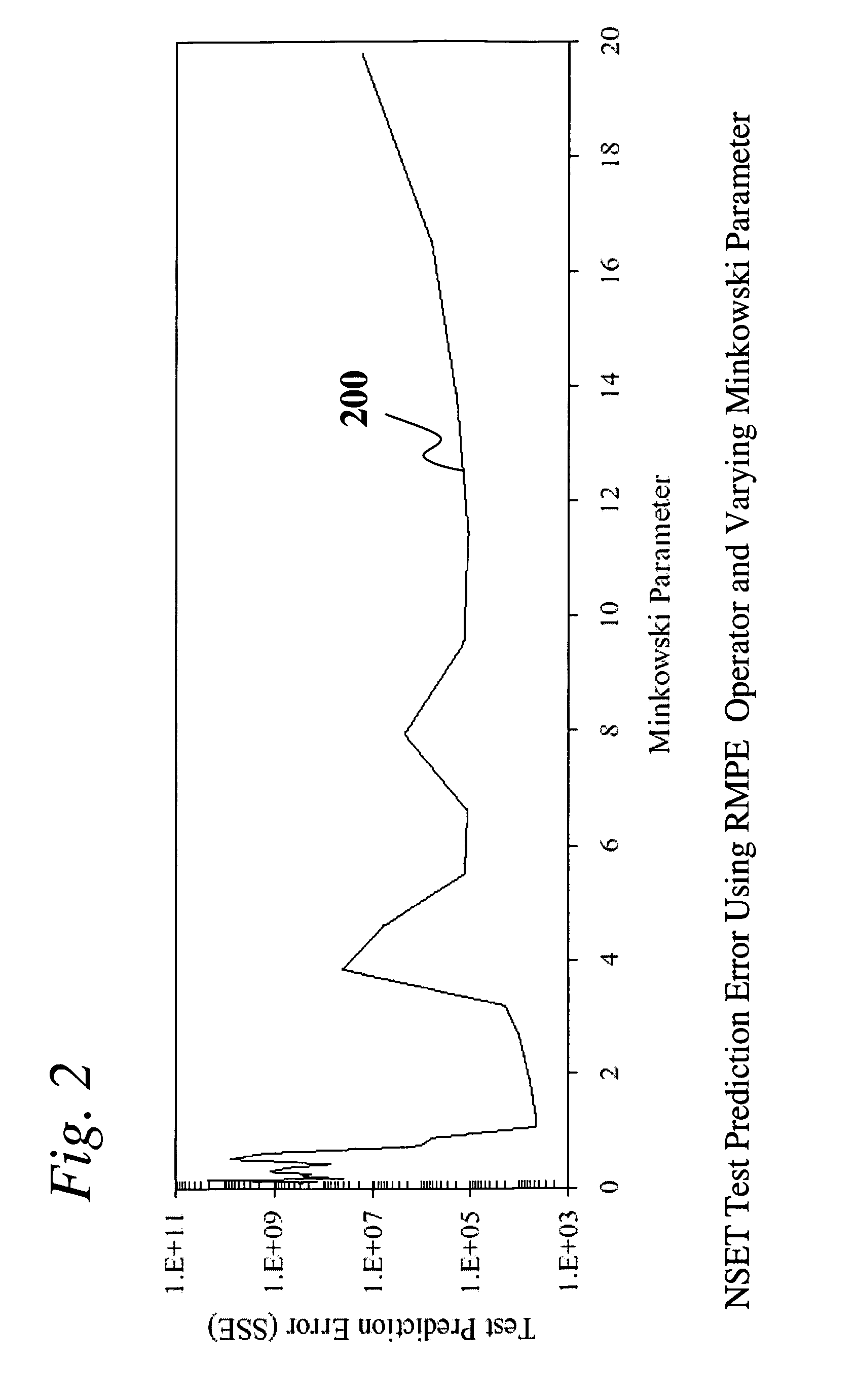Method and system for nonlinear state estimation
a nonlinear state and estimation technology, applied in the field of process modeling and analysis, can solve the problems of inability to perform a system in near real time, inability to accurately and accurately model, and limitations in accuracy and modeling flexibility of each method, so as to improve prediction accuracy, improve model stability, and improve matrix conditioning
- Summary
- Abstract
- Description
- Claims
- Application Information
AI Technical Summary
Benefits of technology
Problems solved by technology
Method used
Image
Examples
Embodiment Construction
[0034]Preferred embodiments of the present invention are illustrated in the FIGURES, like numerals being used to refer to like and corresponding parts of various drawings.
[0035]A nonlinear state estimation technique (NSET) has been developed to perform process modeling and analysis. One embodiment of the NSET of this invention can be used to model a sensor and associated instrument channel calibration verification system. The model estimates the true process values, as functional sensors would provide them. The residuals between these estimates and the actual measurements (from sensors of unknown condition) can then be monitored using the sequential probability ratio test, a statistical decision method.
[0036]Still another embodiment of the NSET of this invention can be used in an electronic commerce (e-commerce) setting to model the behavior of human visitors to a web-site. For example, based on a visitor's demographic information or prior purchase history, future purchase activity ...
PUM
 Login to View More
Login to View More Abstract
Description
Claims
Application Information
 Login to View More
Login to View More - R&D
- Intellectual Property
- Life Sciences
- Materials
- Tech Scout
- Unparalleled Data Quality
- Higher Quality Content
- 60% Fewer Hallucinations
Browse by: Latest US Patents, China's latest patents, Technical Efficacy Thesaurus, Application Domain, Technology Topic, Popular Technical Reports.
© 2025 PatSnap. All rights reserved.Legal|Privacy policy|Modern Slavery Act Transparency Statement|Sitemap|About US| Contact US: help@patsnap.com



